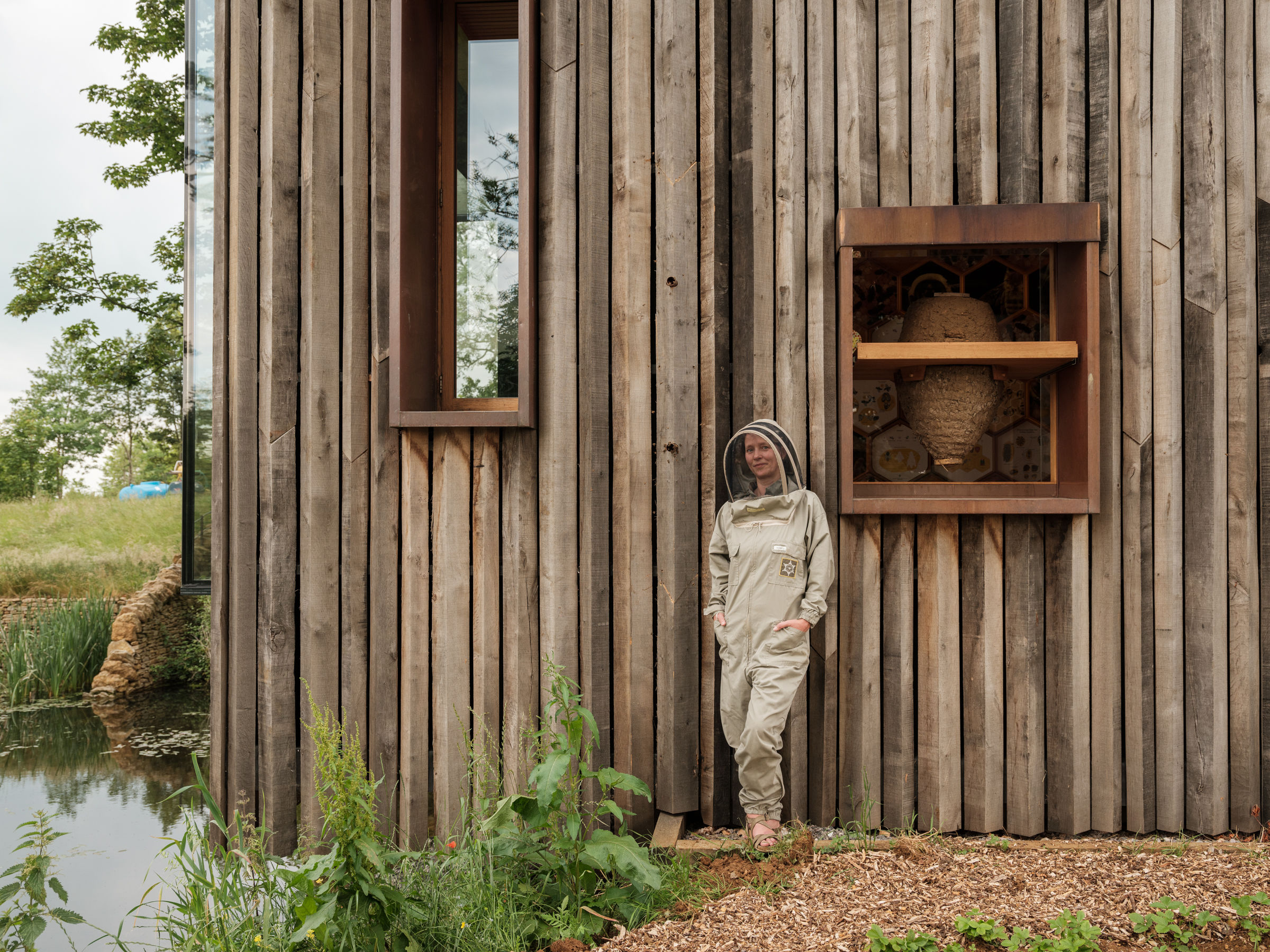Are Honeybees Putting Other Pollinators Out of Business? The Backlash to Urban Beekeeping

Photography courtesy of the Newt.
It’s interesting to realize that honeybees are not native to North America. When bumblebees bizz-whizz towards the long nectary of a foxglove or luxuriate in the pollen overspill of a hollyhock, they are doing a more effective job of spreading pollen around than honeybees.
Tucked away down a woodland path, the Newt’s Beezantium is surrounded by trees and overlooking water, both of which are essential to the wellbeing of bees and can be in rather short supply in cities.
Paula Carnell, the Newt’s head beekeeper. According to , head beekeeper at The Newt in Somerset, the local eco-system can be thrown off balance when people buy bees for their new hives.
Piers Taylor, founder of Invisible Studio Architects says of the building: “It appears jewel-like, quirky and playful, almost like a folly with a glowing copper roof. But instead of being only about pleasure, the Beezantium is a purposeful building designed to house bees in observation hives in the external walls.”
And yet many domestic gardens are just getting started, with dandelions a trigger to get mowing (when in fact they provide crucial early food).
The Beezantium is clad in strips of untreated oak. Plants such as comfrey and phacelia (native to both North America and the UK) are able to replenish their nectar in 24 seconds, she says, unlike a monoculture of, say, lavender.
A network of copper pipes eases access to the apiary within the Beezantium’s walls.